Ertach Kernow - Cornish hillforts and cliff castles
Cornish hillforts and cliff castles are perhaps places worth seeking out. With spring approaching fast it’s time to start thinking about what the coming summer will bring to Cornwall. Perhaps time to consider some out of the way activities where we can enjoy aspects of Cornwall beyond the usual haunts of tourists and far from the madding crowds. In Scotland there is a great interest in climbing Munros, those mountains in Scotland over 3000 feet high, not an option here in Cornwall. Bronn Wenneli and Torr Garow out on Bodmin Moor are a good walk but not really a summer long walking project.
Cornwall has a good selection of both hill forts and cliff castles and one of the positive things about visiting these is that they’re mostly free and accessible. We have some great early medieval castles at Tintagel, Restormel, Launceston and later Tudor castles at Pendennis and St Mawes, but these cost and will no doubt be busy.
The Bronze Age and later Iron Age here in Cornwall saw some interesting defensive structures built that include hill forts, cliff castles and what we call in Cornwall rounds. Many of these structures were not necessarily to permanently live in but used from time to time for defensive purposes or as places to meet. Often sited on high ground they certainly provide some fine viewing opportunities of the surrounding countryside. There are so many ancient and historic Cornish monuments included within with in the ‘defensive’ category we can only give an overview of a few of these here from throughout Cornwall, with links being added on our website over the coming weeks.
Chun Castle, near Penzance is located in an area full of ancient and interesting monumental sites and as this is high up offers great views over the surrounding countryside. Built during the Iron Age it has two walls encircled by an external ditch. Excavations uncovering pottery sherds have shown occupation at Chun Castle was between the third century BCE and the first century CE. However, with remains of round houses within the defensive walls there are suggestions that there was occupation during the Roman period and perhaps up until the 6th century CE. The close by even more ancient Neolithic Chun Quoit suggests that the site with its excellent defensive position may have been occupied at an even earlier stage.
I last visited Chun Castle about three years ago, unfortunately the mist was lying low, so I didn’t get a good view on that occasion. With views way into the distance on a bright sunny day, the views are truly magnificent.
Castle an Dinas on the outskirts of Columb Major also has fantastic views over the surrounding countryside. One of my favourite places to visit away from Newquay due to its close proximity and that so few people are usually there. Quite amazing that so many local people only know it from the road sign pointing in its direction. This is a most impressive hillfort, one of the largest in Cornwall with three concentric rings of ditches and ramparts. Standing some 700 feet above sea level and with a diameter of 850 feet it is a relatively easy walk from the nearby car park up and through the defences to the summit. It dates from the Iron Age, about the 2nd century BCE, but also has two Bronze Age barrows and indications that there may have also been a Neolithic past. With its position overlooking a huge area of central Cornwall there should be no doubt that this site has been appreciated for defensive purposes, albeit now considered to be a meeting place or even ceremonial purposes for the ancient local community. From a point of view of ceremonial use it must be reflected that even today the site is used for the Tansys Golowan midsummer bonfire celebrations carried out by the St Columb Major Old Cornwall Society.
Castle an Dinas is one of the many sites throughout Cornwall, which is managed by the Cornwall Heritage Trust, who acquired it in 1989. As with many sites these are liable to encroachment by bracken and other invasive plants, so don’t be surprised to see a flock of sheep munching away helping keep growth under control. Please keep dogs on a lead when visiting for that reason and take away plastic bags with dog excrement, often found lying on the path. Who really does that?
Trevelgue Head at Newquay perhaps not a quiet as some places but should not be missed if you like a coastal view on your walk. Views are beautiful and quite spectacular when stormy. This site is one of the most impressive promontory forts or cliff castles in Cornwall. Sadly, not only the elements conspire to erode much of it away, but visitor misuse has also contributed. Throughout this century English Heritage has made a number of attempts to help preserve the archaeology of the site due to its importance as a scheduled monument. As part of their work the Newquay Old Cornwall Archaeological Group carryout a watching brief to report any damage that may need remedial work. They would appreciate regular walkers perhaps getting in touch to help them carryout this voluntary task. They can be contacted via our email in the red circle. The site itself consists of seven ramparts and ditches with a crevice in the land thus forming what as locally known as Porth Island. Although there is evidence of Bronze Age activity, such as the barrows, the actual cliff castle is of Iron Age construction. The hand drawn map by the archaeologist Lieutenant-Colonel Fred Hirst from his work in 1934 shows the defences. A far more important study was carried out in 1939 by C K Croft Andrew, sadly cut short by the war, but unearthing many important finds creating a better understanding of the site. The remains of a number of round houses of both Bronze and Iron Age were discovered as well as evidence for Roman activity. The chasm that turned Trevelgue Head into an island is believed to have been formed by discovery of iron ore when digging the fourth rampart ditch. The subsequent excavations was then aided by erosion, with the action of the sea completing the island forming process. Trevelgue Head is acknowledged as a very important archaeological site, so much so that further digs were carried out during the present century.
Castle Canyke is one of two hill forts in the Bodmin area. Enclosing a large area, it has sadly suffered badly over time through obliteration by ploughing and the opening up of several modern gaps. Believed to have been from the Iron Age there would have been a couple of ditches and a rampart enclosing about 18 acres. One of the claims to fame for Castle Canyke is that it was the meeting place for the Cornish rebellion of 1549 popularly known as the Prayer Book Rebellion, but perhaps more accurately The Western Rising or Western Rebellion.
The other hill fort close to Bodmin is at Dunmere and has been overgrown for centuries and is probably not well-known even locally because of that. It has been estimated that the Dunmere site was used between the 8th and 5th centuries BCE and records show that it has a single rampart bank and ditch 3metres high and 2 metres deep respectively.
Both these hillforts were covered more fully in the Ertach Kernow article of February 2021 available on this website. Link - Taking the High Ground Bodmin’s Hill Forts
Warbstow Bury is perhaps lesser known, even probably unknown to most who have lived in Cornwall their whole lives. Although I knew about this site I have never visited what is one of the finest hill forts in Cornwall, shame on me, and definitely one for this coming summer. It is one of the largest hill forts in Cornwall covering 19 acres and the views are said to be spectacular, from Dartmoor towards Bude and Lundy Island, so choose a good day to visit. The sheer size of this site gives some credence that this may have been occupied by an elite person, let’s not go down the Arthur route though if her ever lived that would have been in post Roman period. This is an Iron Age site as evidenced by pottery sherds, although it may have been in use during the Bronze Age. There is what was thought to have been a pillow barrow within the earthworks and there was much speculation as to who was buried there. English Heritage suggest that it isn’t a burial barrow at all.
The hillfort is what is known as a multivallate site, one with multiple ramparts and ditches, Warbstow Bury’s ramparts over 5 metre high and ditches nearly 3 metres deep remain well preserved and impressive considering its age. It is sited within close proximity to water sources and would have overlooked a number of other prehistoric settlements to the north and west on Bodmin Moor then in later periods medieval farming settlements. As with Castle an Dinas there is substantial bracken and gorse as well as sheep quietly munching.
So, here’s a few suggestions for those that want to start getting out and visit interesting sites whilst walking. There are many more sites of all types and I would be most interested to hear where readers have been over the summer. Always pleased to receive photos to share.
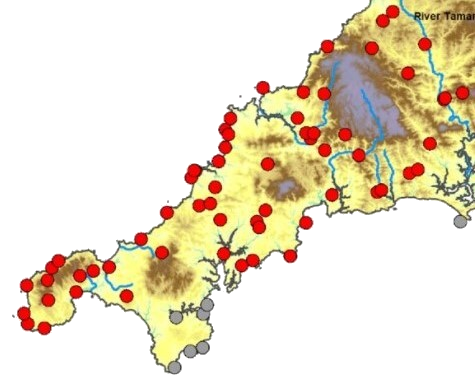
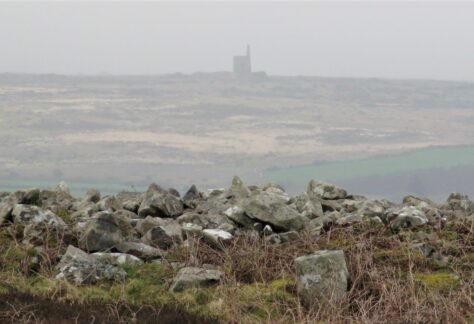
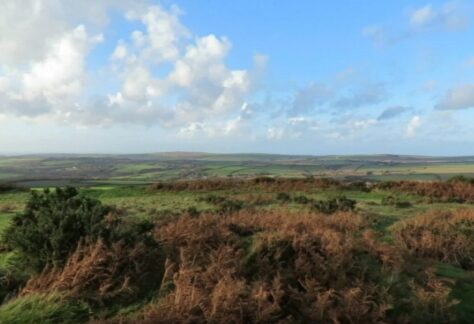
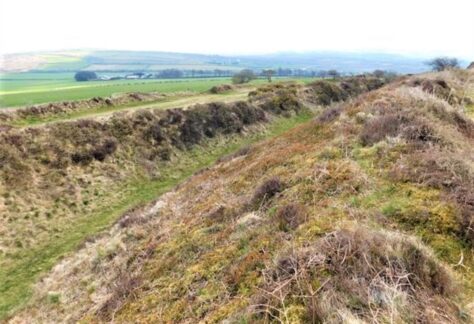
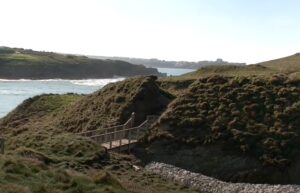
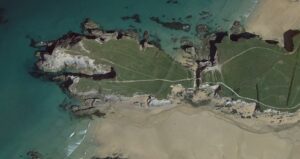
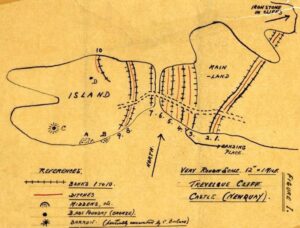
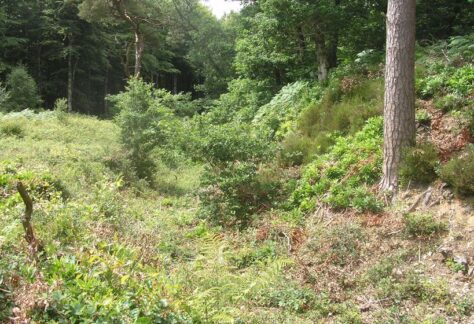
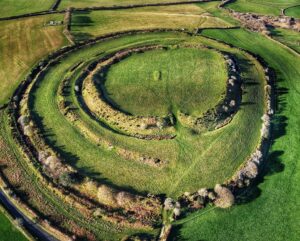
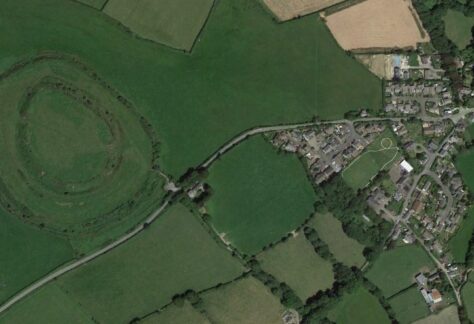
![[89] Voice - Ertach Kernow- 09.03.22A Hillforts and cliff castles [S] Hillforts and cliff castles](https://www.cornwallheritage.com/wp-content/uploads/2022/03/89-Voice-Ertach-Kernow-09.03.22A-Hillforts-and-cliff-castles-S-227x300.jpg)
![[89] Voice - Ertach Kernow- 09.03.22B Hillforts and cliff castles [S] Ertach Kernow - Hillforts and cliff castles](https://www.cornwallheritage.com/wp-content/uploads/2022/03/89-Voice-Ertach-Kernow-09.03.22B-Hillforts-and-cliff-castles-S-224x300.jpg)
![[89] Ertach Kernow Heritage Column - 9th March 2022 - Thoughts on Nationalism Ertach Kernow Heritage Column - 9th March 2022 - Thoughts on Nationalism](https://www.cornwallheritage.com/wp-content/uploads/2022/03/89-Ertach-Kernow-Heritage-Column-9th-March-2022-Thoughts-on-Nationalism-286x300.jpg)